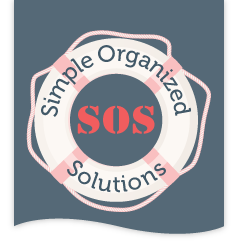 Paper clutter seems to be one of the biggest organizing challenges for, well, everyone actually. Most of my clients have clutter in the form of paper in various places all over their homes.
Paper clutter seems to be one of the biggest organizing challenges for, well, everyone actually. Most of my clients have clutter in the form of paper in various places all over their homes.
Paper accounts for 25 percent of waste in the landfill and 33 percent of municipal waste. Recycling can help with these numbers but the point is that we have a lot of paper to deal with at any given time.
Paper takes up a lot of space even when it’s organized. When it’s not, it becomes paper clutter. And as I’ve mentioned before, clutter produces stagnant energy, and that causes stress.
Incoming paper comes from a variety of sources, mainly from the US Postal Service. Paper pieces arrive, or are given to us as snail mail, newsletters, newspapers, magazines, bank statements, receipts, bills, etc.
The best way to control paper clutter is to eliminate, or at least minimize, the amount that comes in through the front door. By minimizing the amount, the task of organizing the remainder that you really need to keep, shouldn’t be so daunting.
Fortunately, the internet provides a multitude of ways to help with the paper clutter minimization or elimination process.
Grab on to a life preserver by using some or all of the helpful tips below to rescue you from drowning in your sea of papers.
Junk mail:
There are many websites that provide the means to opt out of junk mail. Unfortunately, there are some local ads that you cannot stop, or at least I haven’t found a way yet.
There are a few options listed below that you can check out. In my experience the best way to stop unwanted mail is to call the company and ask to be removed from their mailing list.
OptOutPrescreen – Official Consumer Credit Reporting Industry website to accept and process requests from consumers to Opt-In or Opt-Out of firm offers for credit or insurance.
CatalogChoice – Free service to opt out of catalogs, coupons, credit card offers, phone books, circulars and more.
PaperKarma® – Snap a photo. Stop junk mail & unwanted catalogs.
Banking:
Register for online banking and paperless communications, such as monthly statements.
Bills:
Most vendors now have online bill payment services. This is a cost savings because you can get email alerts to schedule payments to avoid late fees. It also eliminates the need for postage stamps and envelopes.
Some payments can be setup to pay automatically from an electronic transfer from a bank account or a credit card.
Receipts:
If you are given the choice of receiving a paper or electronic receipt, choose electronic. You can always print it out if the need arises.
Newspapers & newsletters:
Consider online news sources for the most current information and cancel your newspaper subscriptions.
If you receive a paper newsletter from a charity where you donate, ask them to send it electronically.
Magazines:
Recycle the previous edition when the current edition arrives. If you aren’t finished with it, thumb through it and tear out pages that catch your eye. Consider cancelling your subscription if you don’t have time to read this magazine, or read the online version.
How do you manage incoming paper?


